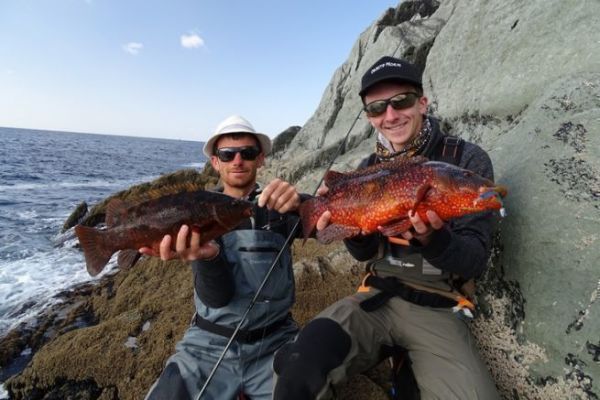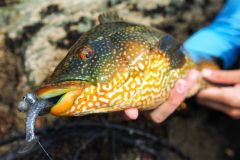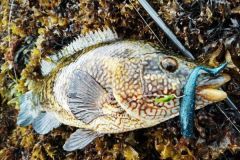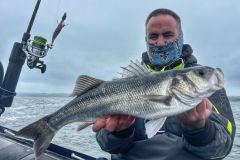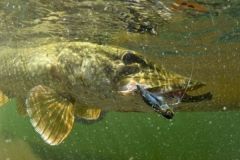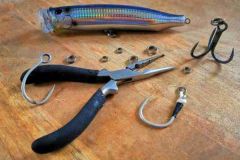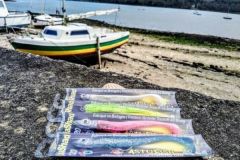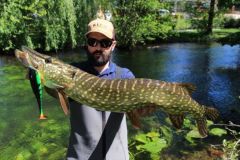A similar biotope
The Oldsmelt is abundantly present in all areas likely to harbor leeches. It is particularly fond of rocky bottoms overgrown with kelp, where it can shelter easily and roam in search of food. It can be found at all depths, especially when fishing from shore in less than 2 meters of water.
It's very easy to catch them when the sea is rough and they get even closer to the shore, but calm days sometimes allow you to sight-fish them along the rocks and get an even better feeling. Steep coasts are often the most productive, but you still need to be careful when fishing on rocks that can be very slippery at low tide.
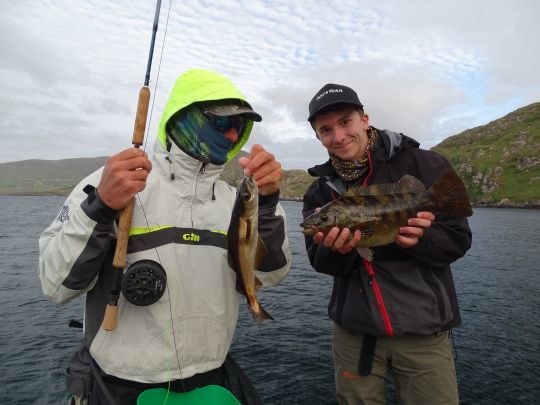
Fishing with soft lures
Soft lures are probably the most effective way to look for the old one. They can be fished with many different types of lures, including shads, finess and even crayfish imitations. The ideal rig is undoubtedly the Texan, which allows you to pass through the kelp without hooking, increasing your chances of catching a fish.
Lures can be of any color, but I've noticed that greenish and grey colors work best when the sky is relatively clear. If in doubt, I advise you to use weights between 5 g in very calm waters, up to 14 g if the sea is rough and you want to fish deep.
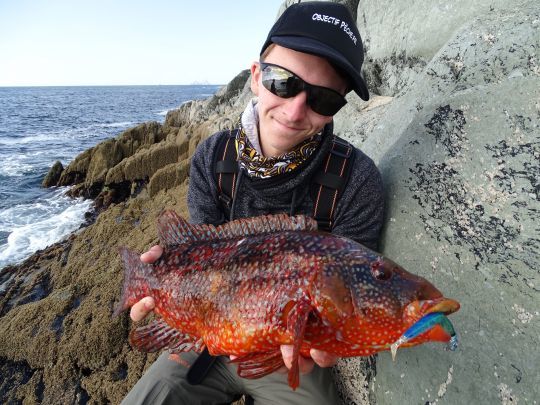
The "benches" of old
It's not uncommon to come across areas that are very favourable for the presence of old fish, and to be able to catch a large number of them without having to move. It's often the larger specimens that bite on the first casts, then the average size gradually diminishes over time.
It is therefore necessary to follow the coastline and prospect several spots if you wish to target large individuals. If you have the opportunity to fish with a partner, you will regularly have the chance to double up. Preferably equip yourself with a sturdy rod, with which you should be able to extract large individuals from the kelp.
